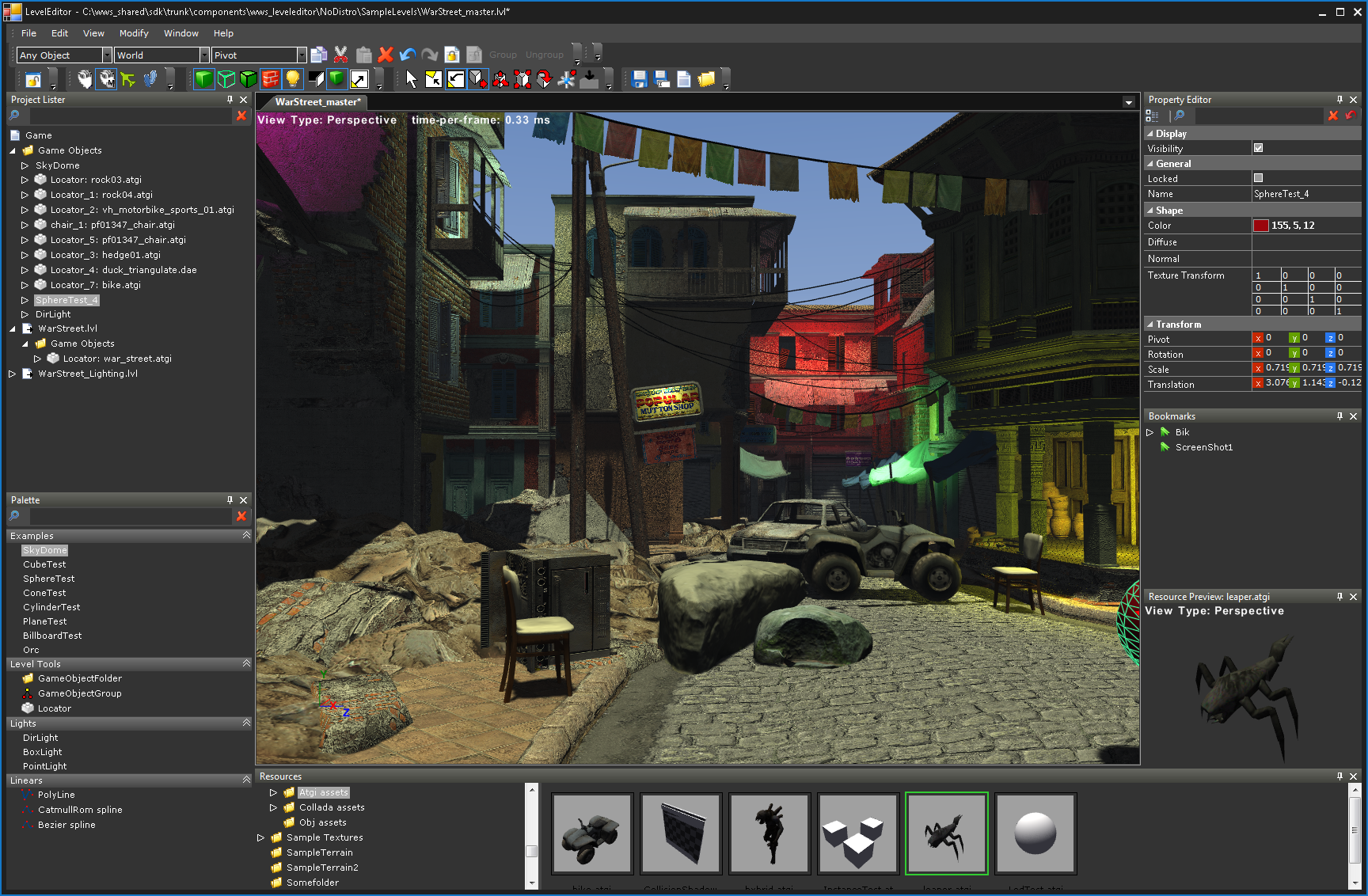Authoring Tools Framework (ATF) is a set of C#/.NET components for making tools on Windows®. ATF has been used by most Sony Computer Entertainment first party game studios to make many custom tools such as Naughty Dog's level editor and shader editor for The Last of Us™, Guerrilla Game's sequence editor for Killzone™ games (including the Killzone: Shadow Fall™ PS4™ launch title), an animation blending tool at Santa Monica Studios, a level editor at Bend Studio, a visual state machine editor for Quantic Dream, sound editing tools, and many others. ATF has been in continuous development in Sony Computer Entertainment's Worldwide Studios central tools group since early 2005.
This figure shows LevelEditor, a powerful tool built with ATF for constructing and editing game levels. LevelEditor is also an open source project, available at LevelEditor. See other tools built with ATF at Gallery and ATF adopters.
There are many types of components in ATF. ATF Managed Extensibility Framework (MEF) components can be added to a .NET TypeCatalog with a single line of code, which allows you to easily add these capabilities to your application. MEF components can be found in most of our sample applications, as in this Circuit Editor sample source file Program.cs. Other components, like the Document Object Model (DOM), are actually a collection of related classes. Look over a list of useful components in ATF at Important ATF Components.
ATF is an open source project. See License.txt.
ATF is a technology with great depth in some of its areas. To learn whether ATF is for you and to make effective use of it, you'd be well-advised to acquire the background offered in the ATF documentation, especially topics in the ATF Getting Started section. This section tells you what you need to know to use ATF:
- ATF Requirements and Dependencies
- ATF Features and Benefits
- How to install ATF
- Basic ATF Frameworks
- ATF Samples and Tutorials
- Next Steps to learn ATF
The ATF wiki is at https://github.com/SonyWWS/ATF/wiki.
We have PDF files in the Docs folder or Documentation.
Forums for meeting other ATF users, having discussions, and receiving announcements from us ATF developers.
Bugs, feature requests, and questions:
https://github.com/SonyWWS/ATF/issues.
Contact, in English or Japanese:
[email protected]


